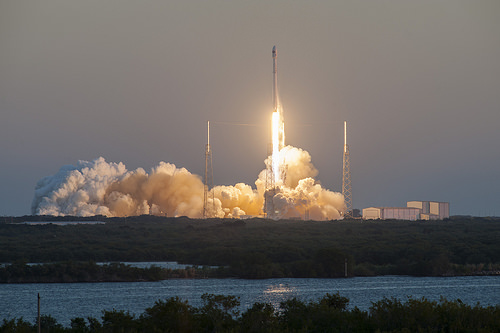
Last week, Space Exploration Technologies (SpaceX) made history by successfully relaunching one of their previously used Falcon 9 rockets back into space. The rocket took off from Cape Canaveral, Florida, sent a communications satellite into orbit, and safely landed on one of SpaceX’s drone ships floating in the Atlantic Ocean. This mission was a significant milestone that could dramatically lower the cost of space technology.
Until now, rockets have almost all been single-use. Once the fuel is expended, a rocket will plummet back to Earth, resulting in the destruction of extremely expensive equipment that costs tens of millions of dollars to build. It has been likened to scrapping a 747 jet after one flight, which would make air travel impossibly expensive.
SpaceX CEO Elon Musk appeared on the company’s live stream shortly after the landing and spoke about the accomplishment. “It means you can fly and refly an orbital class booster, which is the most expensive part of the rocket. This is going to be, ultimately, a huge revolution in spaceflight,” he said.
The last major attempt at a reusable spacecraft was NASA’s Space Shuttle. However, the promised ultra-low cost of the space shuttle never materialized. With more private companies developing space technology, there is more competition for innovation, which in turn leads to faster growth within the field.
This success highlights the recent rapid technological development in the private sector.
The lower costs and developing technologies will lead to many opportunities, including the potential to vastly improve the global communications industry. A wide range of broadband and communications services could be provided for residential, commercial, institutional, government and professional users worldwide at a significantly lower rate and broader range.
SpaceX entered the aerospace market with a goal that is commonly shared between those in the private sector: lower the price to compete aggressively for market share. The successful relaunching of the Falcon 9 is a major step in progressing that goal and revitalizing the aerospace industry by completing the economic cycle of lower costs as a result of competition and innovation.

